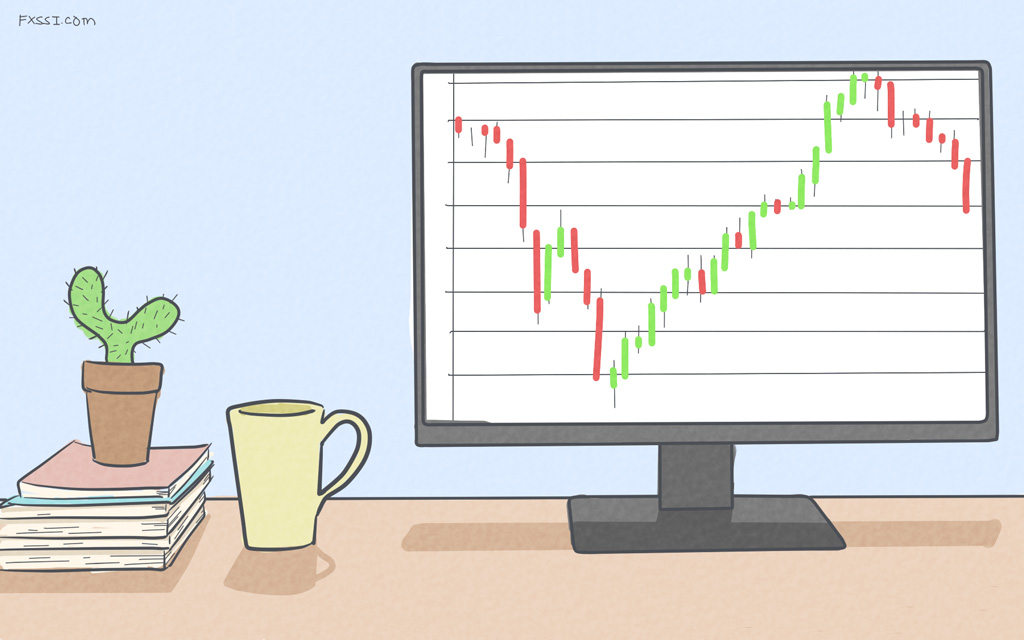Three Types of Forex Analysis
We've separately explored each of the three types of Forex analysis and offered indicators to help you create a trading strategy that lets you combine the best of each.

So, the three types of Forex analysis most commonly used by traders are:
- Fundamental analysis,
- Technical analysis,
- Sentiment analysis.
While some Forex traders swear by one or another, the best among them are able to use a combination of these Forex analysis methods.
Each Forex trader has a different personality and trading style, but the most important thing in markets is to be informed.
Let’s dive into each type of analysis in more detail.
1. Fundamental Analysis
Timeframe: Long term.
Trading Tools Required: Forex news portal.
The first type of Forex analysis is fundamental analysis.
Fundamental analysis allows traders to look at a Forex currency pair and analyze the news behind the economy to which it belongs.
Any economic, political or even social structure within that economy all have an effect on the supply and demand of the country’s currency.
Think of it in the way that if a country’s economy is strong, then currency demand in order to invest will also be high and price will rise as a result.
The most important piece of fundamental news to Forex markets, is monetary policy and how a central bank’s decision to hike or lower interest rates will affect demand.
Almost all of the most important Forex news releases that you find on an economic calendar will have an effect on monetary policy and fundamental analysis requires you to pay attention.
Just be aware that fundamental analysis alone will never be a determining factor for short term moves and must therefore be considered only with the larger picture in mind.
Forex News Indicator
To trade fundamental analysis successfully, you're going to require access to a Forex news portal.
Using the FXSSI Forex news indicator, you can avoid taking attention away from your charts and no longer have to flick between windows to see releases.
This is a simple, yet effective Forex news indicator that has been designed to keep things as brief as possible for traders.
Forex traders know that the actual number released isn’t the most important factor behind whether price moves up or down.
There are so many other factors such as what’s already been priced in, market positioning and overall sentiment.
For this reason, our Forex news indicator is designed to inform you, without overwhelming you with unnecessary distractions you’d find on a classic economic calendar.
2. Technical Analysis
Timeframe: Short term, long term.
Trading Tools Required: Technical indicators.
The second type of Forex analysis, is technical analysis.
Technical analysis is the art of looking for patterns on a price chart in order to make predictions on future moves.
Technical analysis is all about finding places to enter and exit trades with the highest probability of success.
In the end, all that price charts show us, is human behavior.
As I’m sure you well know by now, human beings are creatures of habit and will repeat past behavior in often predictable ways.
It's here that technical analysis allows us to find patterns on a chart that show where traders are likely to look to enter and exit their trades in the future.
One drawback to using technical analysis in your trading is that it’s a highly subjective form of analysis where two traders can come to opposite conclusions from the same chart.
This is where the use of technical indicators can help remove some of that subjectivity, at least from a risk management perspective.
Technical Indicators
If you’re going to use technical analysis within your trading, then indicators will support your decision-making process.
At FXSSI, we have a range of technical indicators to help you make smart, high probability trading decisions based on the patterns on your charts.
There are a huge range of technical indicators available and with time placed in testing, a number of indicators can become real assets to your trading strategy.
Even if you consider yourself a price action trader, we have a number of technical indicators that support this trading style.
Indicators help guide traders by removing the subjectivity that a simple candlestick price chart shows.
From indicators that help draw horizontal support/resistance lines, through to trend lines and even Forex market volume, there’s an indicator to assist all trading styles.
3. Sentiment Analysis
Timeframe: Short term.
Trading Tools Required: Sentiment indicators.
The third type of Forex analysis is sentiment analysis.
Forex sentiment analysis lets traders evaluate whether that particular market is net short or net long.
If you can understand how the rest of the market is positioned, then you’re able to make decisions based on what you expect them to be forced into doing next.
Sentiment analysis is an often-overlooked form of market analysis that when used correctly alongside the fundamental and technical, can give you a real profitable edge.
Sentiment analysis is most often used by contrarian Forex traders who want to take a position in the opposite direction to how the overall market is positioned.
This is because if you know that a particular market is for example 90% long, then the traders’ only option to close out those positions, is to sell.
Supply/demand would dictate that price would be forced down, as only sellers remain.
Sentiment Indicators
If you’re looking to apply sentiment analysis to your overall trading strategy, you’re going to need data.
This is where our range of FXSSI sentiment indicators come in.
The most popular sentiment indicator in our suite of MT4 add-ons, is the Speculative Sentiment Index, otherwise simply known as SSI.
The SSI is a contrarian indicator used for sentiment analysis of a Forex market, allowing traders to take a position in the opposite direction to the overall crowd.
By using the SSI indicator to determine whether a market is overall long or short, then you’re able to take advantage when their positions must be closed.
The trend may be your friend, but you most certainly don’t want to be the last one off the trend.
By using sentiment analysis indicators, you can make sure you’re not caught out as the last one holding a directional position.
Comparing the Three Types of Forex Analysis
We’ve compiled the information above into a handy table for you to compare each of the three types of Forex analysis.
| Short Term | Long Term | Indicators | News | |
|---|---|---|---|---|
| Fundamental Analysis | X | X | ||
| Technical Analysis | X | X | X | |
| Sentiment Analysis | X | X |
Based on the data in the table, you can choose the type of analysis that is more convenient for you.
Bringing the Three Types of Forex Analysis Together
Forex traders are always going to have a preference for one type of Forex market analysis over another.
While that’s perfectly okay and we encourage you to use what works for your particular trading strategy, the best traders are able to combine elements of all three.
Use fundamental analysis to check the big picture economic direction for a long-term bias, follow it up with a short-term technical analysis view to pinpoint a sharper entry, and finally consider market sentiment to make sure you don’t get caught out by the changing tide.
We've all heard the saying that information is power.
So don’t leave yourself in the dark when information that could help you make money, or more importantly stop you from losing money, is right in front of your eyes.











